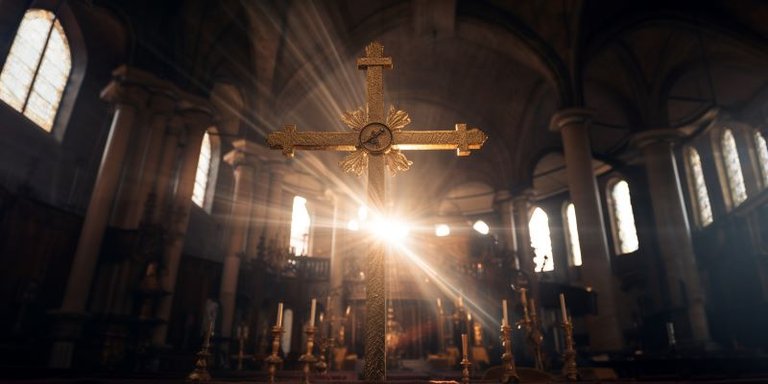
The cosmos, as we understand it, suffered a significant upheaval on July 16, 1945, when a cosmic anomaly, known as The Tear, materialized just beyond the confines of our solar system. This enigmatic presence, perceived by many as the manifestation of an omnipotent cosmic deity, called Rozdzerac in esoteric circles, brought forth a multitude of cataclysmic tragedies, resulting in the death of over 700 million people worldwide. The Tear not only altered material reality but also stirred spiritual awakenings and religious revivals, leading to the rise of numerous cults drawing inspiration from this cosmic god. This article delves into the origins, beliefs, and impacts of these cults, focusing on their esoteric, hermetic, and gnostic interpretations of The Tear.
The Tear: A Cosmic Catalyst
The Tear, a celestial phenomenon that emerged at the edge of our solar system, brought about a drastic transformation of reality as we knew it. The anomaly's presence seemed to warp the material reality, unleashing processes and forces that defied scientific understanding. One of the most profound impacts of this cosmic event was the manifestation of terrifying creatures, previously unknown to science. As scientists scrambled to comprehend and document these new lifeforms, the Tear's enigmatic nature stirred a global spiritual awakening, sparking the birth of numerous cults.
The Rozdzerac Phenomenon
In the wake of The Tear's arrival, the esoteric circles identified the anomaly as Rozdzerac, a cosmic god of immense power. This identification marked the genesis of a multitude of religious revivals and schisms, resembling the upheavals that rocked the Catholic Church following the publication of Martin Luther's Ninety-Five Theses and the subsequent Reformation. The Tear's mysterious powers and its capacity to reshape reality fueled the rise of several cults, each interpreting the Rozdzerac phenomenon through different spiritual lenses, including esotericism, hermeticism, and gnosticism.
The New Fellowship: A Global Cult
Among the numerous cults inspired by The Tear, The New Fellowship emerged as the most prominent, amassing a large global following. Drawing heavily from esoteric, hermetic, and gnostic teachings, The New Fellowship proposed a unique interpretation of Rozdzerac's powers and purpose. They postulated that the cosmic god's arrival signified a divine call for humanity to transcend its current state of existence and ascend to a new plane of consciousness. This interpretation, while bearing semblance to Christianity and other Abrahamic religions, diverged significantly in its emphasis on achieving gnosis, or direct knowledge of the divine, through esoteric and mystical practices.
Synthetic Theories and Hegelian Influence
The New Fellowship's teachings, while rooted in ancient spiritual traditions, also incorporated elements of Hegelian systemic thinking. Drawing from the dialectical methodology proposed by German philosopher Georg Wilhelm Friedrich Hegel, the cult synthesized disparate ideas to forge a new worldview that aligned with The Tear's transformative powers. This synthetic approach also permeated the cult's moral and ritual practices, which combined asceticism with a deep emphasis on personal, spiritual experiences.
Other Notable Cults
In addition to The New Fellowship, other cults inspired by The Tear gained notoriety for their unique interpretations of the cosmic event. These include:
The Rozdzerac Disciples
The Rozdzerac Disciples proposed a dualistic cosmology, postulating The Tear as the divine manifestation of light amidst the darkness of the physical world. Their teachings emphasized the attainment of gnosis through the rejection of material possessions and the pursuit of spiritual enlightenment.
The Order of the Cosmic Tear
The Order of the Cosmic Tear, on the other hand, embraced a monistic worldview, viewing The Tear as an integral part of a singular, all-encompassing reality. They believed in the interconnection of all beings and stressed the significance of unity and harmony in achieving spiritual ascension.
The Keepers of the Tear
The Keepers of the Tear adopted a radical dualist perspective, viewing The Tear as a malevolent force in opposition to a superior divine entity. They advocated for the spiritual liberation from The Tear's influence through strict ascetic practices and rigorous moral codes.
Impacts and Influences
The rise of these cults, inspired by The Tear, significantly impacted global religious and social landscapes. Their influence infiltrated various institutions, promoting alternative perspectives on reality, existence, and spirituality. However, their doctrines, particularly the synthetic theories derived from Hegelian thinking, also sparked controversy and were deemed heretical by many mainstream religious institutions.
Modern Interpretations and Controversies
The cults of The Tear continue to evolve and adapt to the changing socio-cultural contexts. While some maintain their esoteric and hermetic practices, others have embraced more contemporary spiritual trends. However, their unconventional beliefs and practices, especially their interpretations of The Tear as a divine entity, continue to incite debates and controversies in religious, academic, and scientific circles.
Conclusion
The Tear, or Rozdzerac, has undeniably left an indelible mark on global spiritual landscapes, giving rise to a plethora of cults each interpreting the cosmic phenomenon in unique ways. From The New Fellowship's synthesis of esotericism, hermeticism, and gnosticism to the Rozdzerac Disciples' dualistic cosmology and The Keepers of the Tear's radical dualism, these cults offer a fascinating glimpse into humanity's ceaseless quest for understanding the divine and the cosmos.
While the cults of The Tear have faced criticism and controversy, their influence persists, testament to the enduring allure of the unknown and the unexplainable. As we continue to grapple with the mysteries of The Tear, these cults remain integral to our collective spiritual journey, challenging our perceptions of reality and pushing the boundaries of our spiritual explorations.
THE TEAR SOCIAL:
LINKTREE
WEBSITE
ODYSEE/LBRY
TWITTER

CREATOR: @theothercola
PHIL ABATECOLA'S PERSONAL SITE
